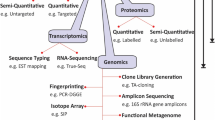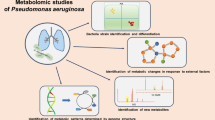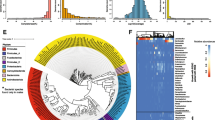Abstract
Methanogens are strictly anaerobic archaea metabolising by-products of bacterial fermentation into methane by using three known metabolic pathways, i.e. the reduction of carbon dioxide, the fermentation of acetate or the dismutation of methanol or methylamines. Methanogens described in human microbiota include only Euryarchaeota, i.e. Methanobrevibacter smithii, Methanobrevibacter oralis, Methanobrevibacter arbophilus, Methanobrevibacter massiliensis, Methanomassiliicoccus luminyensis, Methanosphaera stadtmanae and Ca. Methanomethylophilus alvus and Ca. Methanomassiliicoccus intestinalis. Methanogens are emerging pathogens associated with brain and muscular abscesses. They have been implicated in dysbiosis of the oral microbiota, periodontitis and peri-implantitis. They have also been associated with dysbiosis of the digestive tract microbiota linked to metabolic disorders (anorexia, malnutrition and obesity) and with lesions of the digestive tract (colon cancer). Their detection in anaerobic pus specimens and oral and digestive tract specimens relies on microscopic examination by fluorescence in situ hybridisation, specific DNA extraction followed by polymerase chain reaction (PCR)-based amplification of the 16S rRNA and mcrA gene fragments and isolation and culture in the supporting presence of hydrogen-producing bacteria. Diagnostic identification can be performed by matrix-assisted laser desorption/ionisation time-of-flight mass spectrometry (MALDI-TOF MS) and can be further completed by genotyping through multi-spacer sequencing and, ultimately, whole genome sequencing (WGS). Ornidazole derivatives, fusidic acid and rifampicin are the compounds to be included in in vitro susceptibility testing to complete the clinical workflow. Clinical microbiology laboratories should work toward developing cheap and easy protocols for the routine detection and identification of methanogens in selected specimens in order to refine the diagnosis of infections, as well as to expand the knowledge about this group of intriguing microorganisms.



Similar content being viewed by others
References
Nkamga VD, Henrissat B, Drancourt M (2017) Archaea: essential inhabitants of the human digestive microbiota. Hum Microb J 3:1–8
Lyu Z, Shao N, Akinyemi T, Whitman WB (2018) Methanogenesis. Curr Biol 28:R727–R732
Vanwonterghem I, Evans PN, Parks DH, Jensen PD, Woodcroft BJ, Hugenholtz P, Tyson GW (2016) Methylotrophic methanogenesis discovered in the archaeal phylum Verstraetearchaeota. Nat Microbiol 1:16170
Nguyen-Hieu T, Khelaifia S, Aboudharam G, Drancourt M (2013) Methanogenic archaea in subgingival sites: a review. APMIS 121:467–477
Grine G, Terrer E, Boualam MA, Aboudharam G, Chaudet H, Ruimy R, Drancourt M (2018) Tobacco-smoking-related prevalence of methanogens in the oral fluid microbiota. Sci Rep 8:9197
Dridi B, Fardeau ML, Ollivier B, Raoult D, Drancourt M (2012a) Methanomassiliicoccus luminyensis gen. nov., sp. nov., a methanogenic archaeon isolated from human faeces. Int J Syst Evol Microbiol 62:1902–1907
Nkamga VD, Drancourt M (2016) Methanomassiliicoccus. In: Whitman WB (ed) Bergey’s manual of systematics of archaea and bacteria. John Wiley & Sons, Chichester, vol 34, pp 1–7
Wampach L, Heintz-Buschart A, Hogan A, Muller EEL, Narayanasamy S, Laczny CC, Hugerth L, Bindl L, Bottu J, Andersson AF, de Beaufort C, Wilmes PW (2017) Colonization and succession within the human gut microbiome by archaea, bacteria, and microeukaryotes during the first year of life. Front Microbiol 8:738
Grine G, Boualam MA, Drancourt M (2017) Methanobrevibacter smithii, a methanogen consistently Colonising the newborn stomach. Eur J Clin Microbiol Infect Dis 36:2449–2455
Neu J, Rushing J (2011) Cesarean versus vaginal delivery: long-term infant outcomes and the hygiene hypothesis. Clin Perinatol 38:321–331
Miller TL, Wolin MJ, Conway de Macario E, Macario AJ (1982) Isolation of Methanobrevibacter smithii from human feces. Appl Environ Microbiol 43:227–232
Dridi B, Henry M, El Khéchine A, Raoult D, Drancourt M (2009) High prevalence of Methanobrevibacter smithii and Methanosphaera stadtmanae detected in the human gut using an improved DNA detection protocol. PLoS One 4:e7063
Lurie-Weinberger MN, Gophna U (2015) Archaea in and on the human body: health implications and future directions. PLoS Pathog 11:e1004833
Bang C, Vierbuchen T, Gutsmann T, Heine H, Schmitz RA (2017) Immunogenic properties of the human gut-associated archaeon Methanomassiliicoccus luminyensis and its susceptibility to antimicrobial peptides. PLoS One 12:e0185919
Koskinen K, Pausan MR, Perras AK, Beck M, Bang C, Mora M, Schilhabel A, Schmitz R, Moissl-Eichinger C (2017) First insights into the diverse human archaeome: specific detection of archaea in the gastrointestinal tract, lung, and nose and on skin. MBio 8:e00824-17
Probst AJ, Auerbach AK, Moissl-Eichinger C (2013) Archaea on human skin. PLoS One 8:e65388
Moissl-Eichinger C, Probst AJ, Birarda G, Auerbach A, Koskinen K, Wolf P, Holman HN (2017) Human age and skin physiology shape diversity and abundance of Archaea on skin. Sci Rep 7:4039
Belay N, Johnson R, Rajagopal BS, Conway de Macario E, Daniels L (1988) Methanogenic bacteria from human dental plaque. Appl Environ Microbiol 54:600–603
Huynh HTT, Pignoly M, Nkamga VD, Drancourt M, Aboudharam G (2015a) The repertoire of archaea cultivated from severe periodontitis. PLoS One 10:e0121565
Khelaifia S, Raoult D, Drancourt M (2013a) A versatile medium for cultivating methanogenic archaea. PLoS One 8:e61563
Wolfe RS (2011) Techniques for cultivating methanogens. Methods Enzymol 494:1–22
Raskin L, Stromley JM, Rittmann BE, Stahl DA (1994) Group-specific 16S rRNA hybridization probes to describe natural communities of methanogens. Appl Environ Microbiol 60:1232–1240
Luton PE, Wayne JM, Sharp RJ, Riley PW (2002) The mcrA gene as an alternative to 16S rRNA in the phylogenetic analysis of methanogen populations in landfill. Microbiology 148:3521–3530
Dridi B (2012) Laboratory tools for detection of archaea in humans. Clin Microbiol Infect 18:825–833
Kurr M, Huber R, König H, Jannasch HW, Fricke H, Trincone A, Kristjansson JK, Stetter KO (1991) Methanopyrus kandleri, gen. and sp. nov. represents a novel group of hyperthermophilic methanogens, growing at 110°C. Arch Microbiol 156:239–247
Ollivier B, Cayol JL, Patel BKC, Magot M, Fardeau ML, Garcia JL (1997) Methanoplanus petrolearius sp. nov., a novel methanogenic bacterium from an oil-producing well. FEMS Microbiol Lett 147:51–56
Zeikus JG, Henning DL (1975) Methanobacterium arbophilicum sp. nov. An obligate anaerobe isolated from wetwood of living trees. Antonie Van Leeuwenhoek 41:543–552
Kern T, Fischer MA, Deppenmeier U, Schmitz RA, Rother M (2016) Methanosarcina flavescens sp. nov., a methanogenic archaeon isolated from a full-scale anaerobic digester. Int J Syst Evol Microbiol 66:1533–1538
Kern T, Linge M, Rother M (2015) Methanobacterium aggregans sp. nov., a hydrogenotrophic methanogenic archaeon isolated from an anaerobic digester. Int J Syst Evol Microbiol 65:1975–1980
Khelaifia S, Ramonet PY, Bedotto Buffet M, Drancourt M (2013b) A semi-automated protocol for archaea DNA extraction from stools. BMC Res Notes 6:186
Vianna ME, Conrads G, Gomes BPFA, Horz HP (2006) Identification and quantification of archaea involved in primary endodontic infections. J Clin Microbiol 44:1274–1282
Khelaifia S, Lagier JC, Nkamga VD, Guilhot E, Drancourt M, Raoult D (2016) Aerobic culture of methanogenic archaea without an external source of hydrogen. Eur J Clin Microbiol Infect Dis 35:985–991
Allen KD, White RH (2018) Identification of the radical SAM enzymes involved in the biosynthesis of methanopterin and coenzyme F420 in methanogens. Methods Enzymol 606:461–483
Seng P, Drancourt M, Gouriet F, La Scola B, Fournier PE, Rolain JM, Raoult D (2009) Ongoing revolution in bacteriology: routine identification of bacteria by matrix-assisted laser desorption ionization time-of-flight mass spectrometry. Clin Infect Dis 49:543–551
Dridi B, Raoult D, Drancourt M (2012b) Matrix-assisted laser desorption/ionization time-of-flight mass spectrometry identification of archaea: towards the universal identification of living organisms. APMIS 120:85–91
Nkamga VD, Huynh HT, Aboudharam G, Ruimy R, Drancourt M (2015) Diversity of human-associated Methanobrevibacter smithii isolates revealed by multispacer sequence typing. Curr Microbiol 70:810–815
Huynh HTT, Nkamga VD, Drancourt M, Aboudharam G (2015b) Genetic variants of dental plaque Methanobrevibacter oralis. Eur J Clin Microbiol Infect Dis 34:1097–1101
Dridi B, Fardeau ML, Ollivier B, Raoult D, Drancourt M (2011) The antimicrobial resistance pattern of cultured human methanogens reflects the unique phylogenetic position of archaea. J Antimicrob Chemother 66:2038–2044
Khelaifia S, Brunel JM, Raoult D, Drancourt M (2013c) Hydrophobicity of imidazole derivatives correlates with improved activity against human methanogenic archaea. Int J Antimicrob Agents 41:544–547
Samuel BS, Hansen EE, Manchester JK, Coutinho PM, Henrissat B, Fulton R, Latreille P, Kim K, Wilson RK, Gordon JI (2007) Genomic and metabolic adaptations of Methanobrevibacter smithii to the human gut. Proc Natl Acad Sci U S A 104:10643–10648
Armougom F, Henry M, Vialettes B, Raccah D, Raoult D (2009) Monitoring bacterial community of human gut microbiota reveals an increase in Lactobacillus in obese patients and methanogens in anorexic patients. PLoS One 4:e7125
Million M, Tidjani Alou M, Khelaifia S, Bachar D, Lagier JC, Dione N, Brah S, Hugon P, Lombard V, Armougom F, Fromonot J, Robert C, Michelle C, Diallo A, Fabre A, Guieu R, Sokhna C, Henrissat B, Parola P, Raoult D (2016) Increased gut redox and depletion of anaerobic and methanogenic prokaryotes in severe acute malnutrition. Sci Rep 6:26051
Triantafyllou K, Chang C, Pimentel M (2014) Methanogens, methane and gastrointestinal motility. J Neurogastroenterol Motil 20:31–40
Weaver GA, Krause JA, Miller TL, Wolin MJ (1986) Incidence of methanogenic bacteria in a sigmoidoscopy population: an association of methanogenic bacteria and diverticulosis. Gut 27:698–704
Yazici C, Arslan DC, Abraham R, Cushing K, Keshavarzian A, Mutlu EA (2016) Breath methane levels are increased among patients with diverticulosis. Dig Dis Sci 61:2648–2654
Belkacemi S, Mazel A, Tardivo D, Tavitian P, Stephan G, Bianca G, Terrer E, Drancourt M, Aboudharam G (2018) Peri-implantitis-associated methanogens: a preliminary report. Sci Rep 8:9447
Drancourt M, Nkamga VD, Lakhe NA, Régis JM, Dufour H, Fournier PE, Bechah Y, Scheld WM, Raoult D (2017) Evidence of archaeal methanogens in brain abscess. Clin Infect Dis 65:1–5
Nkamga VD, Lotte R, Chirio D, Lonjon M, Roger PM, Drancourt M, Ruimy R (2018) Methanobrevibacter oralis detected along with Aggregatibacter actinomycetemcomitans in a series of community-acquired brain abscesses. Clin Microbiol Infect 24:207–208
Nkamga VD, Lotte R, Roger PM, Drancourt M, Ruimy R (2016) Methanobrevibacter smithii and Bacteroides thetaiotaomicron cultivated from a chronic paravertebral muscle abscess. Clin Microbiol Infect 22:1008–1009
Author information
Authors and Affiliations
Corresponding author
Additional information
Publisher’s note
Springer Nature remains neutral with regard to jurisdictional claims in published maps and institutional affiliations.
Electronic supplementary material
Below are the links to the electronic supplementary material.
Supplementary Table 1
Primers/probes used for the PCR-based detection of methanogens. (DOCX 16 kb)
Supplementary Figure 1
Structure of coenzyme F420. (PPTX 54 kb)
Rights and permissions
About this article
Cite this article
Sogodogo, E., Drancourt, M. & Grine, G. Methanogens as emerging pathogens in anaerobic abscesses. Eur J Clin Microbiol Infect Dis 38, 811–818 (2019). https://doi.org/10.1007/s10096-019-03510-5
Received:
Accepted:
Published:
Issue Date:
DOI: https://doi.org/10.1007/s10096-019-03510-5




